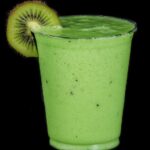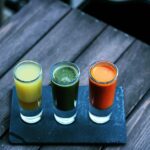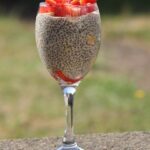How Much Juice In One Orange Can You Get?
Unraveling the Juice Content of an Orange
Oranges are a lovely fruit, cherished for their delicious flavor and vibrant color. But have you ever wondered how much juice is actually in one orange? This question is more complex than it seems, as various factors can influence the amount of juice you can extract.
From the different varieties of oranges to their ripeness and growing conditions, each element plays a crucial role in determining juice yield. Understanding these factors is essential for fruit lovers and juicing enthusiasts alike.
In this article, we will explore the average juice content of an orange, effective juicing techniques, and the numerous health benefits of orange juice. Get ready to squeeze out all the details about this juicy topic!
How Much Juice In One Orange?

Understanding Orange Varieties
When it comes to oranges, not all varieties are created equal. Different types of oranges can yield significantly varying amounts of juice, each bringing a unique flavor and texture to the table. Let’s explore some of the most popular varieties and how they compare in juice production.
Navel Oranges
Navel oranges are perhaps the most recognized variety, famous for their sweetness and easy-to-peel skin. Each fruit typically contains a substantial amount of juice, often around 3 to 4 ounces per orange. Their juicy flesh makes them a preferred choice for fresh eating, but they also perform admirably in juicers. The lack of seeds only adds to their appeal, allowing for a smooth, pulp-free drinking experience.
Valencia Oranges
For those who appreciate a balance of sweetness and tanginess, Valencia oranges are a summer favorite. These are particularly prized for juicing, yielding about 4 to 6 ounces of juice per fruit, depending on their size. Valencias are known to be juicier than many other varieties, making them a popular choice in commercial juice production and among home juicing aficionados.
Blood Oranges
Blood oranges, with their striking color and unique flavor profile, are an exciting choice. Though slightly smaller than standard oranges, they still pack a punch, producing about 2 to 4 ounces of juice. Their rich crimson flesh not only adds a visually appealing twist to juices but also contains additional antioxidants, enhancing the overall nutritional value.
Other Varieties
Other notable mentions include the Cara Cara and the Seville oranges. Cara Caras are sweet and juicy, while Seville oranges are known for their tartness, making them ideal for marmalades rather than juicing.
As we dive deeper into the topic, it is essential to recognize that the variety isn’t the only factor influencing juice content. Factors such as ripeness and growing conditions will also come into play, shaping the final yield. Next, we’ll explore these influences more thoroughly.
Factors Influencing Juice Yield
The amount of juice you can extract from an orange doesn’t solely depend on the variety; several additional factors come into play to determine juice yield. Understanding these influences can help you select the best oranges for your juices.
Size Matters
A larger orange generally contains more juice than a smaller one. While size can be a straightforward guideline, it’s not always a perfect indicator. For instance, an exceptionally plump orange may look juicy but isn’t always the case if it’s not ripe. Thus, weight can also be a better metric than mere visual estimation. A good rule of thumb is to choose oranges that feel heavy for their size.
Ripeness is Key
Ripeness significantly influences juice content. Oranges harvested at their peak ripeness are packed with juice, whereas those picked too early tend to have less juice and may taste more tart. Look for oranges that yield slightly under gentle pressure, as this often indicates they are ripe and juicy.
Growing Conditions
The environment in which the oranges are grown affects their juiciness. Factors like soil quality, water availability, and sunlight all play vital roles:
Seasonal Variations
Season also affects juice yield. Oranges cultivated during peak season usually offer better flavor and juice content compared to those grown out of season. For example, Valencia oranges are often sweetest and juiciest during the summer months when they are in season.
Storage Conditions
Lastly, how oranges are stored post-harvest plays a role. Oranges kept for an extended period may lose moisture, leading to lower juice yield. Buying fresh, in-season oranges often guarantees a more satisfying juicing experience.
In conclusion, when selecting oranges for juicing, consider their size, ripeness, growing conditions, and seasonality. As we move forward, we will delve into the average juice content of an orange, giving you concrete insights into how much juice in one orange you can expect from your selection.
The Average Juice Content of an Orange
When it comes to extracting juice from oranges, knowing the average yield can help you maximize your juicing experience. So, just how much juice in one orange can you typically expect to get? The general consensus among juicing enthusiasts and studies suggests:
Average Juice Yield
With these averages, a few examples can illustrate the practical side of juicing:
Ultimately, understanding the average juice content of oranges allows you to plan better for your juicing endeavors. Armed with this knowledge, you can now turn to the juicing techniques themselves and discover how these methods can impact your yield even further.
Juicing Techniques and Their Impact
When it comes to extracting juice from oranges, the method you choose can significantly influence the yield and quality of the final product. Let’s examine the various juicing techniques, their effectiveness in terms of juice extraction, and their impact on flavor.
Hand Juicing
Hand juicing is perhaps the most traditional method and involves using a simple handheld juicer or even squeezing with your hands. This technique is hands-on and allows for a personal touch, resulting in about 2 to 4 ounces of juice per orange. While it can extract good-quality juice, it may require some effort, especially if you’re juicing multiple oranges. The freshness achieved through hand juicing is unmatched, and you have full control over pulp levels.
Electric Juicers
Electric juicers can vary widely in design and capability, from centrifugal models to masticating juicers.
Commercial Juicing Processes
In a commercial setting, large-scale juicers are designed for maximum efficiency. They can handle substantial quantities and often extract the most juice possible, occasionally exceeding 6 ounces per orange. These machines are equipped to handle various sizes and types of oranges, ensuring a consistent yield. The juice produced tends to be well-filtered and may have a longer shelf life due to pasteurization.
Quality Considerations
While techniques vary in juice yield, they also impact flavor. Hand juicing usually captures the most vibrant taste, while electric options can sometimes extract bitter compounds from the peel, especially in lower-quality machines. Always consider the quality of your juicing tool to enhance the overall taste experience.
Considering these factors, your choice of juicing method plays a crucial role in achieving delicious, nutritious orange juice. Next, we’ll delve into the health benefits of orange juice, exploring why this refreshing beverage is a staple in many diets.
Health Benefits of Orange Juice
Orange juice is more than just a refreshing beverage—it’s a nutritional powerhouse that delivers a wealth of health benefits. Understanding these advantages can inspire you to make orange juice a regular part of your diet.
Vitamin C Boost
One of the standout features of orange juice is its high vitamin C content. Just one cup of freshly squeezed orange juice can provide over 100% of your daily recommended intake. This essential nutrient is vital for:
Hydration Hero
Staying hydrated is key to overall health, and orange juice can play a big role in this. With its high water content—about 86%—it not only quenches thirst but also replenishes electrolytes like potassium, which is essential for heart and muscle function. So, whether you’re recovering from a workout or just feeling parched on a hot day, a glass of orange juice can help you feel refreshed and revitalized.
Antioxidants and Phytochemicals
Beyond vitamin C, orange juice is rich in various antioxidants and phytochemicals, such as flavonoids, which may combat oxidative stress. These compounds contribute to:
Digestive Benefits
Orange juice also aids in digestion. The natural sugars and enzymes present in the juice can help facilitate smoother digestion. Drinking it on an empty stomach may promote better nutrient absorption, making you feel more energized throughout the day.
Incorporating orange juice into your daily diet not only enhances your nutritional intake but also contributes to overall health and vitality. As we wrap up, let’s summarize the key insights regarding orange juice’s contributions, highlighting its role in a healthy lifestyle.
Summarizing Orange Juice Insights
In conclusion, understanding how much juice you can extract from an orange is influenced by various factors, including the orange variety and the juicing technique employed. So, how much juice in one orange then? On average, a medium-sized orange yields about 1/4 to 1/3 cup of fresh juice, but this can vary significantly based on the fruit’s ripeness and overall quality.
As you choose oranges for juicing, consider these insights to maximize your yield and enjoyment. Remember, fresh orange juice not only provides a delicious taste but also offers numerous health benefits. So, next time you’re at the market, select your oranges wisely and savor the freshness!




